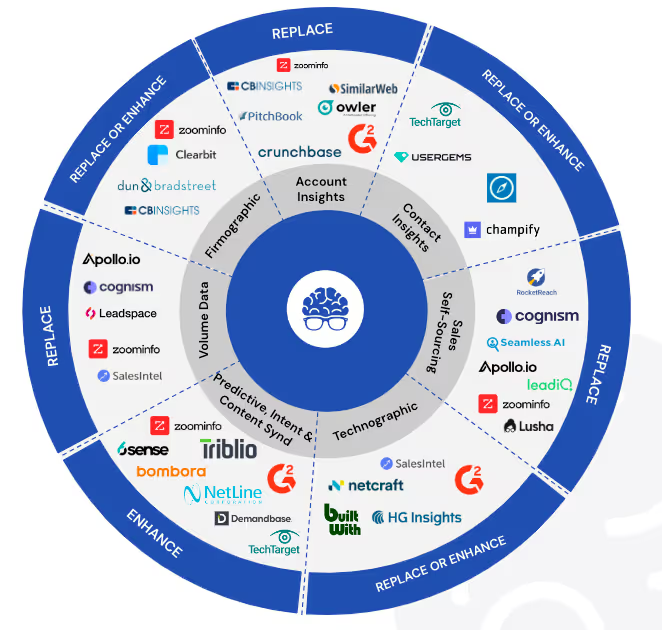There is no need to sugarcoat it: outbound as we know it might be going the way of the compact disc. Just look at the past five years. In this short time, we have witnessed the decline of the once-thriving outbound SDR call centers of the early and mid-2000s. I remember those days vividly, having worked in several outbound organizations where hundreds of beaming reps filled the sales floors. The energy was electric, buzzing with ambition and camaraderie, driven by the collective desire to close deals. Every call held the potential for victory, every conversation a chance to shine. The excitement was palpable and contagious, pushing us all to strive harder and aim higher.
But with the advent of sales enablement tools, autodialers, and a flood of outbound tech, saturation and ineffectiveness crept in. The personal touch that once defined successful outreach began to fade as the market became inundated with automated messages, causing prospects to tune out. The magic of those vibrant sales floors started to dim.
Then came the pandemic, delivering what might have been the final blow to the outbound engines of the mid-2000s. As workers transitioned to remote environments, the energy of a bustling sales floor became harder to pass along. The spontaneous high-fives, the collective celebrations of wins, the shoulder-to-shoulder camaraderie—all were lost in the shift to virtual workspaces. While new technologies like Gong made it easier to coach and provide feedback, the unique bond and energy created by physical proximity proved difficult to replicate in remote settings.
In recent years, the landscape of sales outreach has undergone a seismic shift. The traditional cold outbound approaches that once fueled our predictable revenue models are now facing an existential crisis. We long for the days when a well-placed call could open doors and a well-crafted email could spark interest. But those days seem far behind us. The stark reality is that cold outbound, as we once knew it, is dying a fast death. The strategies that once brought success are no longer effective, leaving the world of sales to adapt or perish.
We find ourselves reminiscing about a time when the hum of ringing phones and the clatter of keyboards were the soundtrack to our successes. When the shared triumph of closing a big deal was celebrated with cheers that echoed through the office. Those were the golden days of outbound sales, a time when human connection and personal touch were the cornerstones of our approach. But now, as we navigate this new landscape, we must find new ways to create that same sense of connection and drive, even if it means bidding farewell to the methods we once held dear.
The Data Tells the Story
Let's look at the numbers:
- The average number of attempts per contact has nearly doubled from 7.3 in 2014 to 11.3 in 2022 (Bridge Group).
- The average number of quality conversations per day has dropped from 8 to 3.6 during the same period.
- The average cold email reply rate is a dismal 1% (Clearbit), and not all of those replies are positive.
- The cold call pick-up rate hovers around 5%, depending on the industry. With tech giants like Apple and Android making it easier to ignore and identify unknown callers, this figure is likely to drop even further.
More emails are being sent to spam, and more calls are getting ignored and blocked. Gone are the days of teams of SDRs making random cold calls into accounts that have no idea who your company is. The mass blast approach—sending thousands of unpersonalized cold emails and making thousands of cold calls—is no longer viable. Outbound cannot be used to create demand. As much as I love SDRs, let’s not kid ourselves. SDR teams aren't going to be educating executives at scale.
Even outbound giants like Salesloft are feeling the pinch. They've moved their SDR function to Mexico City to improve ROI, a clear sign of the times. The saturation of AI chat and calling agents in the market has only exacerbated the problem, leading to plummeting email response rates and diminishing pipeline from cold email efforts.
The Rise of "Inbound-Led Outbound"
So, where do we go from here? The answer lies in a more sophisticated approach that blends inbound and outbound strategies. Adam Robinson calls this concept "inbound-led outbound," and it's a game-changer. The idea is simple: create great thought leadership content to attract prospective buyers into your ecosystem and create fans.
Here's how you can execute this strategy:
- Webinars or Lives: Host engaging webinars or live sessions that provide valuable insights and solutions to common industry problems.
- Articles or White Papers: Produce high-quality written content that offers in-depth analysis and thought leadership.
- Podcasts: Launch a podcast featuring industry experts and thought leaders.
- Guides: Develop comprehensive guides that address key challenges faced by your target audience.
- Social Content: Share insightful and engaging content on social media platforms.
- In-Person or Virtual Events: Organize events that facilitate networking and learning.
Gong has been using this playbook for the last six years with tremendous success. One effective tactic is to partner with non-competing heavy-hitters in your industry, create content together, and share the leads.
Intent and Signal-Based Outbound
The future of outbound lies in intent and signal-based strategies. This means focusing on a targeted segment of your Total Addressable Market (TAM) that's most likely to engage based on specific signals and timing. Here are some examples:
- Previous Customers Who Moved to Another Company: Reconnect with champions who have switched jobs.
- Newly Hired or Promoted Execs: Target decision-makers who are new in their roles and looking to make an impact.
- Following Your Company on LinkedIn: Engage with individuals who are already showing interest in your company.
- Tech Stack: Identify companies using complementary or competitive technologies.
- Mutual Connections with Board, C-Suite, etc.: Leverage your network to get warm introductions.
- Previous Champions in Deals: Re-engage with people who have been involved in past deals.
By focusing on these intent and signal-based approaches, your outbound efforts become much more effective. This strategy ensures that your sales team spends their time on prospects that are more likely to convert, rather than casting a wide net with minimal returns.
The Importance of Thought Leadership and Content
In this new landscape, good content with actual thought leadership is becoming more important than ever. The market is saturated with AI-generated drivel, making authentic and insightful content a differentiator. Companies that can produce valuable and engaging content will stand out and build stronger relationships with their audience.
Warm outbound, using tools like Instantly and Retention.com, offers a way forward. These tools help identify and target prospects who are already showing interest, making your outreach more effective and less intrusive.
In conclusion, pure cold outbound is on its way out. The future lies in a blend of inbound-led outbound and intent-based strategies, supported by high-quality content. By adopting these approaches, your revenue team can stay competitive and thrive in the evolving sales landscape.




